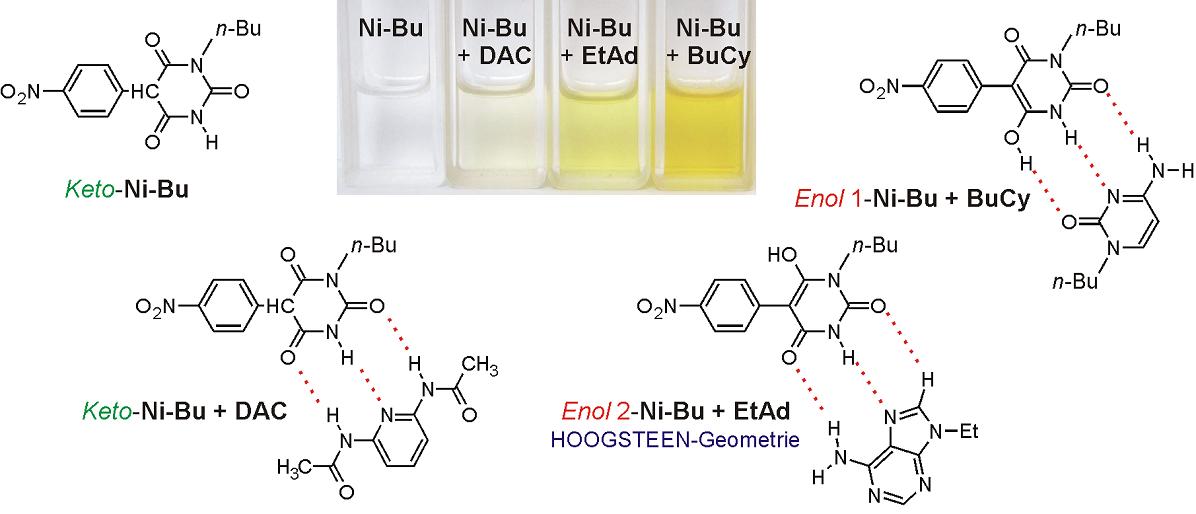Functional Dyes
New barbiture acid derivatives play an important role in this connection.
They are synthesized in our group with regard to an adjustable hydrogen bonding sequence in order
to accomplish an alternative approach towards the detection of DNA bases. An associated question is
whether and how such hydrogen bonds influence the electronic properties as well as the reactivity
of barbiturates. In principle, the barbiturate moiety can exert a (-)M or (+)M effect, depending
on the substituents at the 5-position. Particularly, derivatives where a (+)M effect occurs are
rarely described so that novel syntheses herefore are being developed.

Using such functional dyes, the selective detection of certain anions or bioactive molecules through UV/vis or fluorescence spectroscopy is a major long-term objective. Selected publications on this topic:
Chiral 1,2- and 1,3-Diol-Functionalized Chromophores as Lego Building Blocks for Coupled Structures.
S. Spange, K. Hofmann, B. Walfort, T. Rüffer, H. Lang, J. Org. Chem. 2005, 70, 8564–8567.
Nitro-substituted Stilbeneboronate Pinacol Esters and their Fluoro-Adducts. Fluoride Ion Induced Polarity Enhancement of Arylboronate Esters.
A. Oehlke, A. Auer, I. Jahre, B. Walfort, T. Rüffer, P. Zoufalá, H. Lang, S. Spange, J. Org. Chem. 2007, 72, 4328–4339.
Amino-acid-functionalized solvatochromic probes.
K. Schreiter, S. Spange, J. Phys. Org. Chem. 2008, 21, 242–250.
An Enolisable Barbiturate with Adjustable Hydrogen-Bonding Structure for UV/Vis Detection of Nucleic Acid Bases and Related Compounds.
I. Bolz, S. Spange, Chem. Eur. J. 2008, 14, 9338–9346.
A solvatochromic study of silicates and borates containing 4-nitrocatechol ligands.
F. Riedel, S. Spange, J. Phys. Org. Chem. 2009, 22, 203–211.
Enhancing the reactivity of an electrophilic barbiturate dye by cooperative hydrogen bonding.
M. Bauer, S. Spange, Eur. J. Org. Chem. 2010, 259–264.

